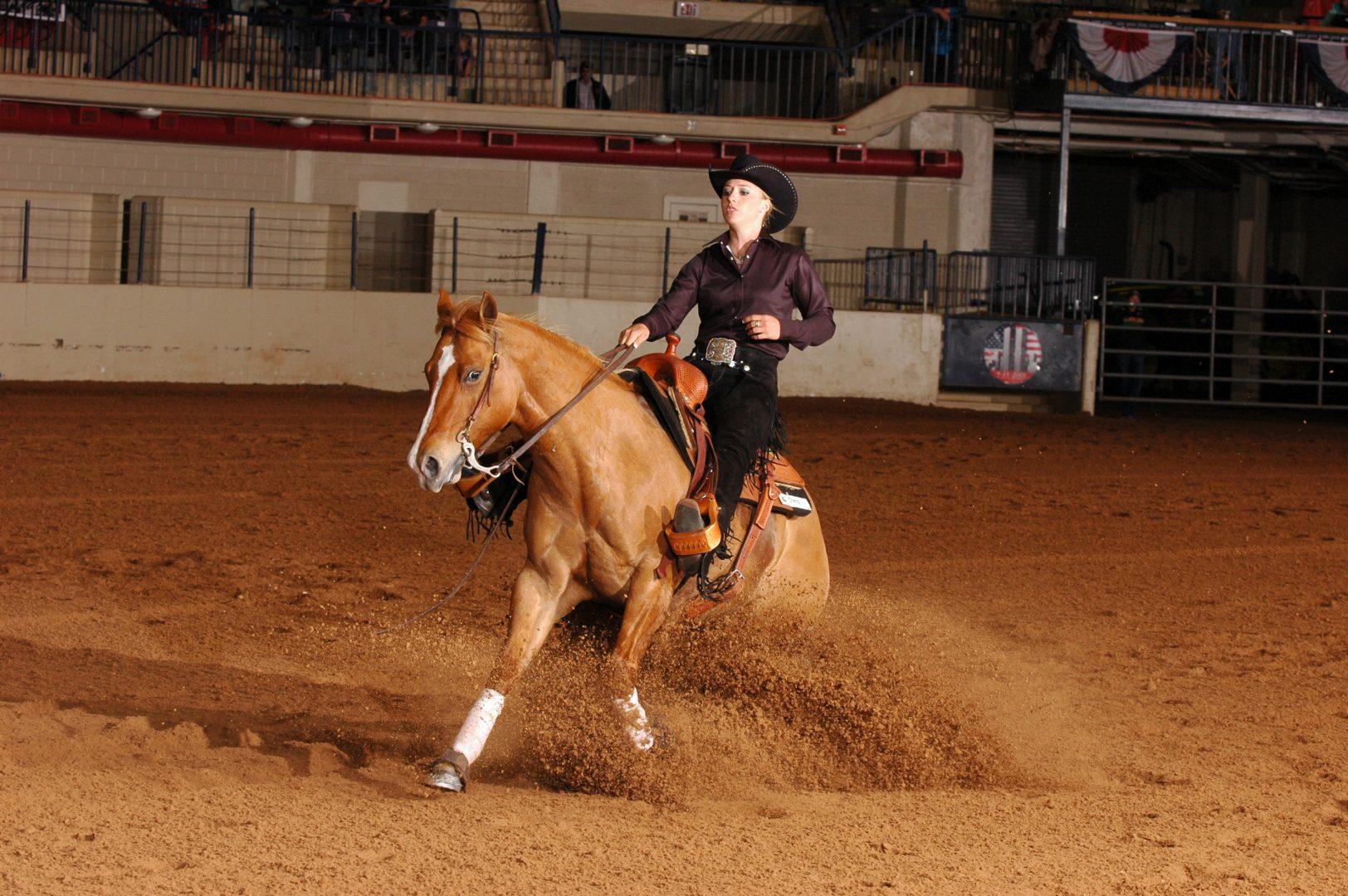DC: How long have you been riding?
TB: Since I could walk or probably before then.
DC: Do you have any memorable stories from when you were first learning how to ride?
TB: No, there have just been stories my mom has told me. I would just be like, ‘Mom, just let me do it on my own.’ No matter how hard it was, I always wanted to do stuff on my own, whether it was like saddling, trying to get on or something like that.
DC: When did you know this was something you wanted to pursue or compete in collegiately?
TB: I’ve been competing since I was really little. I had no idea that the NCAA had an equestrian team, and I actually filled out my eligibility stuff for soccer. Then I ended up doing [equestrian] because I had so many injuries throughout high school [playing] soccer that I figured I’d save my body.
DC: What position did you play in soccer?
TB: I played forward and sweeper.
DC: Can you explain in your own words what equestrian is for people who don’t know or who have never heard of the sport?
TB: There are four events, and there are usually four to five people that show per event ”” two Western, two English. One is reining ”” reining is where they judge the rider and the horse on how the horse responds to the rider in the cues that he or she has given it. You’re required to execute a pattern and if you don’t execute the pattern correctly, you get a zero.
Horsemanship ”” they judge the riders on how well they can control the horse while maintaining correct body position throughout a pattern. On the English side, there are two events. Jumping, which is equitation over fences ”” they judge the riders on how well they can control the horse and present the horse over the fences. Then there’s equitation on the flat which is more like a corsage-type pattern.
DC: That sounds pretty intense.
TB: Yeah, and we only get four minutes to warm up the horse.
DC: During meets or competitions, you guys use the home team’s horses. What’s that like?
TB: Personally, I like going away better than staying at home. I feel like when you go away, you have the challenge of the new horse, and it’s a really big thrill whenever you get on one you might find a little bit challenging. Then, whenever you’re at home, I find that you expect more out of the horses than they usually give you.
DC: Do you have your own horse here?
TB: No, I did, but he went home to go to the training for a horse show coming up.
DC: How did it feel to defeat No. 1 Auburn?
TB: That was a great feeling. It was kind of a rush. I noticed a couple people get a little excited about it. We had to stay at our own level because we still had a competition that day. I think it affected some of the girls, but, other than that, it was awesome.
DC: What’s it going to take to continue that success?
TB: I think we just have to learn from what we’ve done and learn from our mistakes that we’ve made and make sure we don’t make them again.
DC: How do you train or prepare during the week?
TB: We have four to five practices every week. We usually practice on the weekends before meets. Personally, I go back and watch all my old videos. Find spots where I could have done better or where I could have improved on. I focus on those main parts and just keep watching videos throughout the whole time when we’re on the airplane or sitting in the hotels. That way I feel I’m prepared to go in the ring and execute the pattern as well as I can.
DC: What does it mean to you to be a Bulldog?
TB: It’s a great experience. This school has given me the opportunity of a lifetime to go and achieve way more than I ever thought I would be able to. It’s awesome to be able to represent yourself and say, ‘Hey, I’m a student athlete. I’m part of Fresno State,’ and being able to represent and be a role model for other people to look up to.




